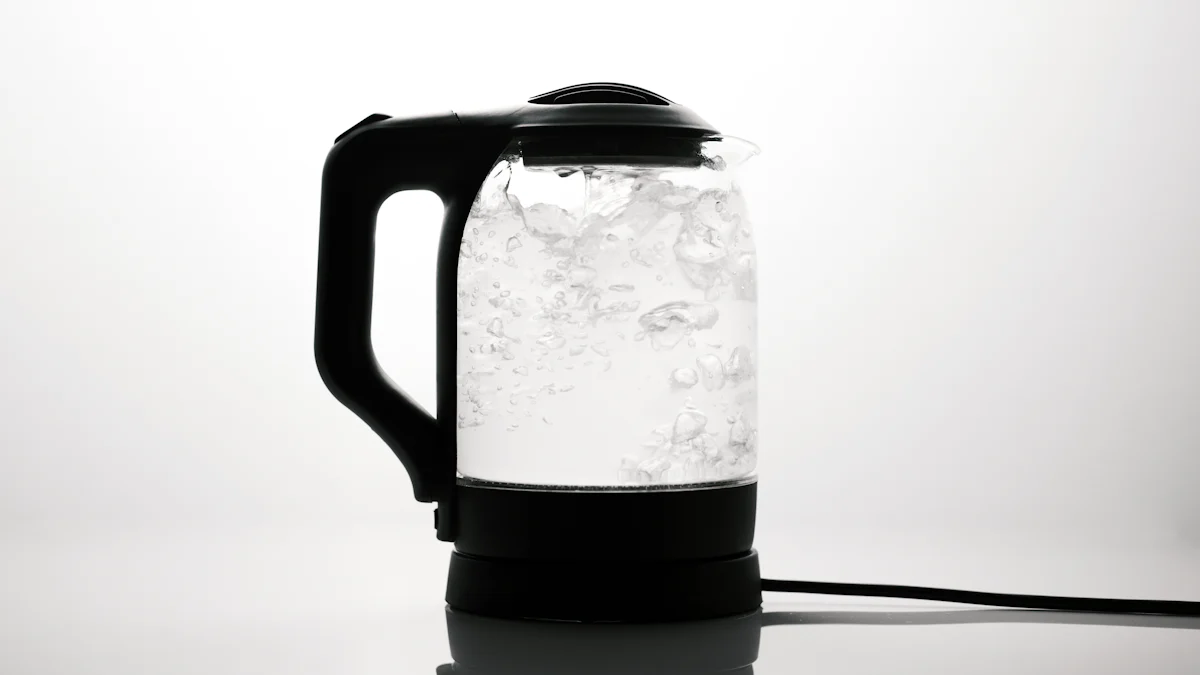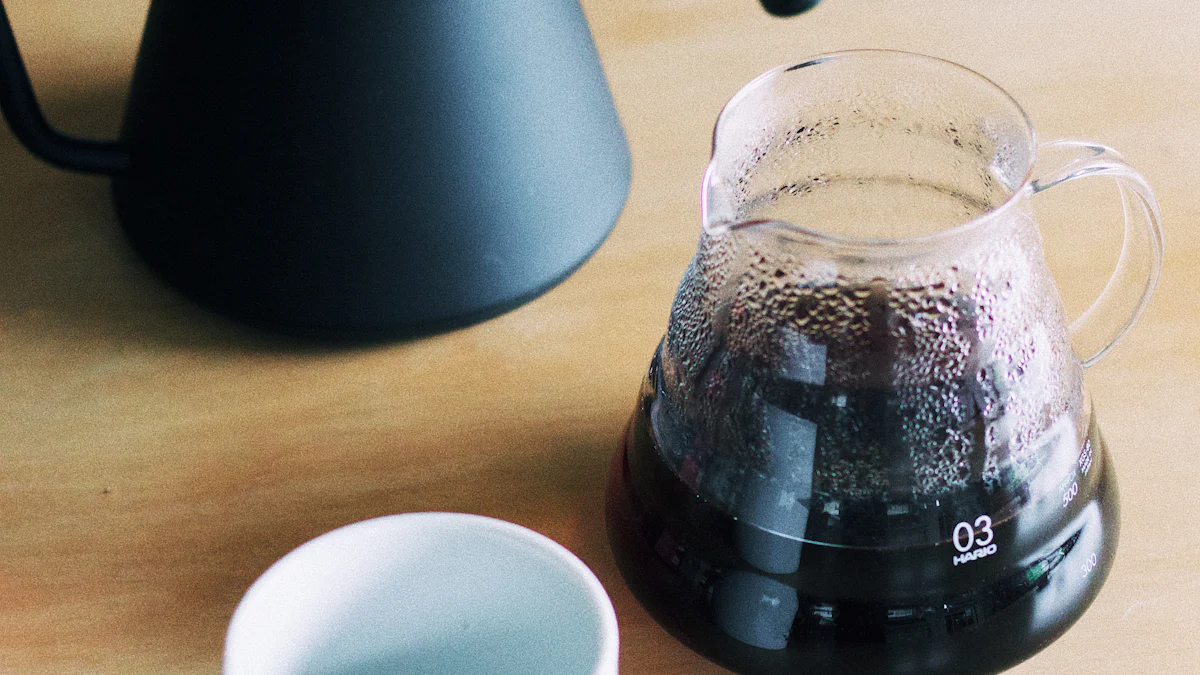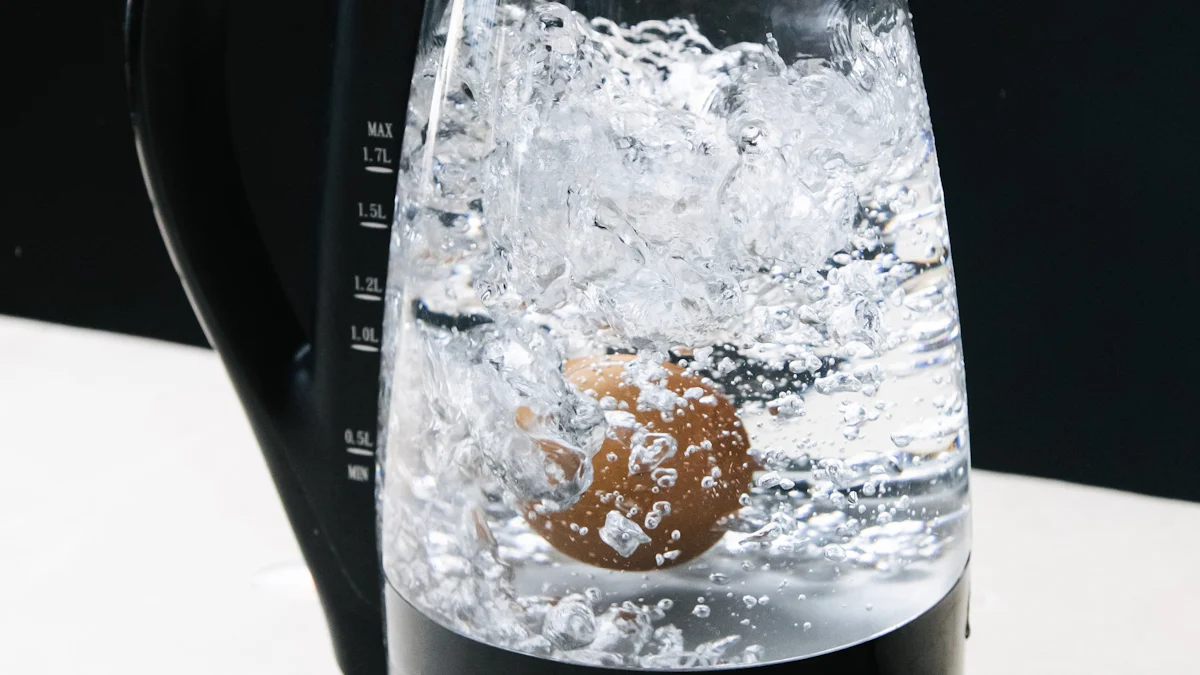
A high-quality kettle combines efficiency, durability, and user-friendly features. It heats water quickly, consumes minimal energy, and operates with minimal noise. Sturdy materials ensure long-lasting performance, while thoughtful designs enhance usability. Proper maintenance, such as regular cleaning, prevents mineral buildup and extends its lifespan, ensuring consistent performance over time.
Key Takeaways
- A good kettle boils water fast. Higher watts mean quicker boiling. Pick kettles with about 1500 watts for best results.
- Get kettles with energy-saving features like insulated sides and auto shutoff. These save power and help the environment.
- Choose kettles made of strong materials like stainless steel or tough glass. This makes them last longer and stay in good shape.
Performance Indicators
Heating Speed
A good kettle should heat water quickly and efficiently. The heating speed depends on the wattage of the appliance. Higher wattage typically results in faster boiling times. For example, a 1500-watt kettle can boil a liter of water in about three to four minutes. This feature is especially important for individuals with busy schedules who need hot water promptly. Rapid heating not only saves time but also enhances convenience. Users should check the product specifications to ensure the kettle meets their expectations for heating performance.
Energy Efficiency
Energy efficiency plays a crucial role in determining the quality of a kettle. An energy-efficient model consumes less electricity while delivering optimal performance. Features like insulated walls and automatic shutoff mechanisms contribute to reducing energy wastage. Some kettles are designed with advanced heating elements that minimize power consumption. Choosing an energy-efficient appliance benefits the environment and reduces electricity bills. Buyers should look for energy ratings or certifications when selecting a kettle.
Noise Levels
Noise levels can significantly impact the user experience. A high-quality kettle operates with minimal noise, ensuring a quieter environment. Excessive noise during operation may indicate design flaws or inferior components. Many modern kettles incorporate noise-reduction technology to address this issue. Quiet operation is particularly valuable in shared spaces or early morning use when others might still be asleep. Consumers should consider reviews or product descriptions to evaluate the noise levels of a kettle before purchasing.
Durability and Build Quality

Material Quality
The material of a kettle directly impacts its durability and performance. High-quality kettles often use stainless steel, aluminum, or borosilicate glass. These materials resist rust, corrosion, and high temperatures, ensuring long-term reliability. Stainless steel kettles, for instance, are known for their robust construction and sleek appearance. Aluminum models, on the other hand, offer lightweight designs without compromising strength. Glass kettles provide a modern aesthetic while allowing users to monitor the water level. Buyers should prioritize materials that align with their needs and preferences.
Resistance to Wear
A durable kettle withstands daily use without showing significant signs of wear. Features like scratch-resistant coatings and reinforced handles enhance its longevity. The spout and lid, often subjected to frequent handling, should maintain their functionality over time. Manufacturers design premium kettles with components that resist dents, discoloration, and other forms of damage. Regular inspections help users identify early signs of wear, ensuring timely maintenance. A well-built kettle remains reliable even after years of consistent use.
Warranty and Longevity
A warranty reflects the manufacturer’s confidence in the product’s quality. Most high-quality kettles come with warranties ranging from one to three years. This coverage protects buyers against manufacturing defects and ensures peace of mind. Longevity depends on the build quality and proper care. Users should follow maintenance guidelines provided by the manufacturer to extend the kettle’s lifespan. Investing in a kettle with a solid warranty and proven durability ensures long-term satisfaction.
Features of a Good Kettle

Auto Shutoff and Safety Features
Safety features play a critical role in determining the quality of a kettle. Auto shutoff functionality ensures the appliance turns off once the water reaches boiling point. This feature prevents overheating and reduces the risk of accidents. Many kettles also include boil-dry protection, which automatically shuts off the device when no water is detected. These safety mechanisms protect users and extend the lifespan of the appliance. Buyers should prioritize models with these essential features to ensure safe and reliable operation.
Cordless Design
A cordless design enhances the convenience of using a kettle. It allows users to lift the kettle off its base without dealing with tangled cords. This feature simplifies pouring and makes the appliance more portable. Most cordless kettles come with a 360-degree swivel base, enabling easy placement from any angle. This design is particularly useful in shared spaces or for individuals who value flexibility. A cordless kettle offers a seamless experience, making it a preferred choice for modern households.
Capacity and Size
The capacity of a kettle determines how much water it can hold. Standard models typically range from 1 to 1.7 liters, catering to different needs. Smaller kettles suit individuals or small families, while larger ones are ideal for gatherings or frequent use. The size of the kettle should also align with available storage space. Compact designs work well in kitchens with limited counter space. Buyers should assess their requirements to select a kettle with the right capacity and size.
Advanced Features
Modern kettles often include advanced features that enhance functionality. Temperature control settings allow users to heat water to specific temperatures, ideal for brewing tea or coffee. LED indicators provide visual cues for operation, while keep-warm functions maintain water temperature for extended periods. Some models even feature touch controls or smartphone connectivity for added convenience. These innovations elevate the user experience, making the kettle a versatile and efficient appliance.
Maintenance and Care
Cleaning and Descaling
Proper cleaning and descaling ensure a kettle remains efficient and safe to use. Regular cleaning removes dirt, stains, and bacteria that may accumulate over time. For basic cleaning, users can rinse the interior with warm water and wipe the exterior with a damp cloth. Descaling addresses mineral deposits caused by hard water. A mixture of equal parts water and white vinegar works effectively for this purpose. Users should fill the kettle with the solution, bring it to a boil, and let it sit for 15-20 minutes before rinsing thoroughly. This process restores the appliance’s performance and prevents damage to its heating elements.
Preventing Mineral Buildup
Mineral buildup can affect a kettle’s efficiency and lifespan. To prevent this issue, users should empty the kettle after each use to avoid stagnant water. Using filtered or distilled water reduces the amount of minerals entering the appliance. Additionally, performing descaling every few weeks minimizes the accumulation of limescale. For areas with extremely hard water, more frequent maintenance may be necessary. Preventing mineral buildup not only enhances the kettle’s performance but also ensures a better-tasting beverage.
Regular Inspections
Routine inspections help identify potential issues before they escalate. Users should check the kettle’s cord, plug, and base for signs of wear or damage. The spout and lid should function smoothly without leaks. Inspecting the interior for discoloration or residue ensures the appliance remains clean and safe. If any components show signs of deterioration, prompt repairs or replacements are essential. Regular inspections maintain the kettle’s reliability and extend its service life.
A high-quality kettle delivers exceptional performance, durability, and user-friendly features. Regular maintenance ensures it remains reliable and safe for daily use. Evaluating a kettle based on these criteria helps buyers make informed decisions. By prioritizing these aspects, users can enjoy a dependable appliance that meets their needs effectively.
FAQ
How often should a kettle be descaled?
Descale a kettle every 4-6 weeks, depending on water hardness. Regular descaling prevents mineral buildup, ensuring optimal performance and extending the appliance’s lifespan.
Can a kettle be used for liquids other than water?
Kettles are designed for water only. Using them for other liquids may damage the heating element or leave residues, affecting performance and taste.
What is the ideal wattage for a fast-heating kettle?
A kettle with 1500-2000 watts provides efficient heating. This wattage range ensures quick boiling times without excessive energy consumption, making it suitable for most households.
Post time: Feb-04-2025
